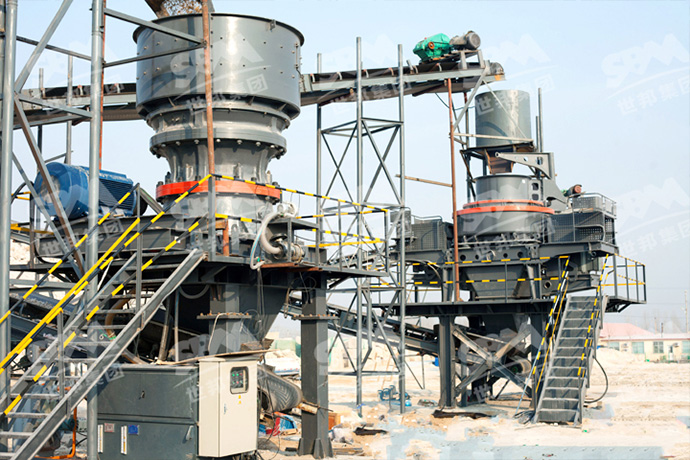During the cone crusher crushing operation, due to the transportation of materials and the operation of the equipment, a large number of fine particles will be dispersed in the surrounding space, causing damage to operators and equipment. This kind of dusty gas needs to be separated into gas-solid phases to purify the air. Dust removal is mainly based on the characteristics of dust particles, such as particle size, density, concentration, adhesion, hygroscopicity and electrostatic characteristics, etc., using gravity and inertia. properties, centrifugal force, washing, filtration and electrostatic precipitating, etc., are completed in corresponding equipment.
- Gravity dust removal can handle coarse particles above 100UM and is used for pretreatment of coarse dust removal and other fine dust removal. The operation method is to introduce dust-containing gas into a large-volume gravity settling box, reduce the gas flow rate, and use gravity to settle the particles and separate them from the gas.
- Inertial dust removal can be used to separate particles and gases above 5UM. Dust-containing gas impacts the baffle of the inertial dust collector during directional deflection, and the particles are captured due to inertia. In order to prevent scattering during impact and collision, high flow rates cannot be used.
- Centrifugal dust removal uses the centrifugal force generated during the rotation of the gas to be hundreds to thousands of times greater than the gravity of the particles, causing the solid particles to settle along the peripheral wall. The equipment used is a cyclone dust collector, and the usually inlet speed is 10-20M/ S, the smaller particles that can be captured have a diameter of 5UM or less.
- Washing and dust removal bring the gas into contact with the spray water to capture the solid particles in it. The commonly used spray dust removal tower introduces gas from the lower part, and sprays water into mist from the upper part for counter-current washing.
- Electrostatic precipitating charges the solid particles in the gas and is attracted to the oppositely charged electrode to achieve the purpose of dust removal. The electrostatic precipitator applies tens of thousands of volts of DC voltage between the metal discharge electrodes, causing the gas between the two electrodes to ionize. When the negatively ionized gas collides with the solid particles, the solid particles are also negatively charged, attracted by the positive electrode, and settle after neutralizing the charge. Come down. This method is suitable for fine dust removal with high requirements; but the dust concentration should not be too high and the gas flow rate should not be too fast.
The above is the relevant content about how to remove dust during the crushing operation of the cone crusher. Customers are welcome to consult!





